

The Zen Macrobiotic Diet - For Health & Happiness. The Zen Macrobiotic diet originated over a century ago and today enjoys a worldwide following due its principles of harmonious living with nature through a balanced whole foods diet, and an active lifestyle and respect for the environment.

Lets look at why the Zen Macrobiotic diet has such a reputation for being one of the healthiest diets in the world. Origins of the Zen Macrobiotic diet Dr. Ishizuka ( the originator of the Zen Macrobiotic diet ) suffered both kidney and skin disease, so to restore his health conducted extensive research which was compiled into two books-Chemical Theory of Longevity, published in 1896, and Diet For Health, published in 1898.
His great successor Yukikazu Sakurazawa integrated the theory with elements of eastern and western philosophy and gave the diet the name we know it by today. Zen Macrobiotic Diet theory Consequently, they categorized all foodstuffs as 'yin' and 'yang', or combinations of them both. According to Mr. . • Drink no coffee or black tea. Growing Blueberries In Containers. Very Good Taste » blog » The Omnivore’s Hundred. Here’s a chance for a little interactivity for all the bloggers out there. Below is a list of 100 things that I think every good omnivore should have tried at least once in their life.
The list includes fine food, strange food, everyday food and even some pretty bad food – but a good omnivore should really try it all. Don’t worry if you haven’t, mind you; neither have I, though I’ll be sure to work on it. Don’t worry if you don’t recognise everything in the hundred, either; Wikipedia has the answers. Here’s what I want you to do: 1) Copy this list into your blog or journal, including these instructions. 2) Bold all the items you’ve eaten. 3) Cross out any items that you would never consider eating. 4) Optional extra: Post a comment here at www.verygoodtaste.co.uk linking to your results. Food chemistry:enzymes:vitamins:water:minerals. Raw foods and enzymes. The more I study nutrition, the more I am convinced that we need to eat raw uncooked unprocessed food.

In 1970, Americans spent about $6 billion on fast food. In 2000, they spent more than $110 billion. It is becoming increasingly clear that one of the major reasons vegetable juicing works is that it is living raw food. I am confident that most of us would notice significant improvements in our energy and health if we increased the amounts of living raw foods in our diet. Fructose. Fructose, or fruit sugar, is a simple ketonic monosaccharide found in many plants, where it is often bonded to glucose to form the disaccharide sucrose.

It is one of the three dietary monosaccharides, along with glucose and galactose, that are absorbed directly into the bloodstream during digestion. Fructose was discovered by French chemist Augustin-Pierre Dubrunfaut in 1847.[4][5] The name "fructose" was coined in 1857 by the English chemist William Miller.[6] Pure, dry fructose is a very sweet, white, odorless, crystalline solid and is the most water-soluble of all the sugars.[7] Fructose is found in honey, tree and vine fruits, flowers, berries, and most root vegetables.
Commercially, fructose is frequently derived from sugar cane, sugar beets, and corn. Crystalline fructose is the monosaccharide, dried, ground, and of high purity. High-fructose corn syrup (HFCS) is a mixture of glucose and fructose as monosaccharides. Chemical properties[edit] EasyGreen Clear Sprouter (Easy Green) - The Easy Seed Sprouter!: Kitchen & Dining. Broccoli. Broccoli is a Super Food.
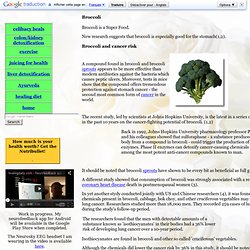
New research suggests that broccoli is especially good for the stomach(1,2). Broccoli and cancer risk The recent study, led by scientists at Johns Hopkins University, is the latest in a series of studies done in the past 10 years on the cancer-fighting potential of broccoli. (1,2) It should be noted that broccoli sprouts have shown to be every bit as beneficial as full grown brocoli. A different study showed that consumption of broccoli was strongly associated with a reduced risk of coronary heart disease death in postmenopausal women (3). In yet another stydy conducted jointly with US and Chinese researchers (4), it was found that chemicals present in broccoli, cabbage, bok choy, and other cruciferous vegetables may protect against lung cancer.
The Sprouting Book: How to Grow and Use Sprouts to Maximize Your Health and Vitality (Avery Health Guides)… Kiwifruit. Kiwifruit by species A = A. arguta, C = A. chinensis, D = A. deliciosa, E = A. eriantha, I = A. indochinensis, P = A. polygama, S = A. setosa.
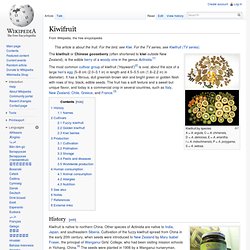
The kiwifruit or Chinese gooseberry (often shortened to kiwi outside New Zealand), is the edible berry of a woody vine in the genus Actinidia.[1] History[edit] Kiwifruit is native to northern China. Other species of Actinidia are native to India, Japan, and southeastern Siberia. Ficus. Description[edit]
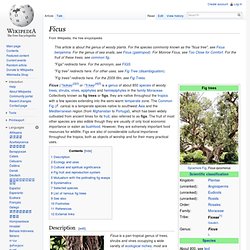
Digestive enzyme. Digestive enzymes are classified based on their target substrates: proteases and peptidases split proteins into small peptides and amino acids.lipases split fat into three fatty acids and a glycerol molecule.carbohydrases split carbohydrates such as starch and sugars into simple sugars such as glucose.nucleases split nucleic acids into nucleotides.
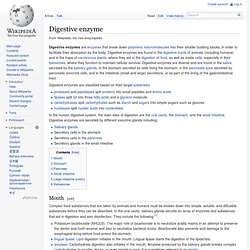
Fenugreek. Fenugreek (/ˈfɛnjʉɡriːk/; Trigonella foenum-graecum) is an annual plant in the family Fabaceae, with leaves consisting of three small obovate to oblong leaflets.

It is cultivated worldwide as a semiarid crop, and its seeds are a common ingredient in dishes from the Indian Subcontinent in South Asia. History[edit] Fenugreek is believed to have been brought into cultivation in the Near East. While Zohary and Hopf are uncertain which wild strain of the genus Trigonella gave rise to domesticated fenugreek, charred fenugreek seeds have been recovered from Tell Halal, Iraq, (carbon dated to 4000 BC) and Bronze Age levels of Lachish and desiccated seeds from the tomb of Tutankhamen.[2] Cato the Elder lists fenugreek with clover and vetch as crops grown to feed cattle.[3] Production[edit] Use[edit]
Pineapple. The pineapple (Ananas comosus) is a tropical plant with edible multiple fruit consisting of coalesced berries,[2][3] and the most economically significant plant in the Bromeliaceae family.[4] Pineapples may be cultivated from a crown cutting of the fruit,[2][5] possibly flowering in 20–24 months and fruiting in the following six months.[5][6] Pineapple does not ripen significantly post-harvest.[7]

Carica papaya. The papaya /pəˈpaɪə/ or /pəˈpɑːjə/ (from Carib via Spanish), papaw, or pawpaw is the fruit of the plant Carica papaya, the sole species in the genus Carica of the plant family Caricaceae. It is native to the tropics of the Americas, perhaps from southern Mexico and neighbouring Central America.[2] It was first cultivated in Mexico[citation needed] several centuries before the emergence of the Mesoamerican classical civilizations.
Carica papaya was the first transgenic fruit tree to have its genome deciphered.[3] Common names[edit] Carica papaya plants and their fruits are known by different names around the English-speaking world: Peanut. Digestive Enzymes and Food Sources. Digestive enzymes help digest foods so the body can use the nutrients. The enzymes are found in raw foods Structure of the enzymes changes with temperature, the enzymes in cooked foods are functionally dead. The grains and legumes are sprouted to make them edible. Eat raw fruits at the beginning of a meal. Enzymes. All living organism depend on catalytic proteins called enzymes, these compound are responsible for metabolism and biochemical regulation of energy, there are millions of enzymes and hundreds of enzymes have been identified in the human body as well.
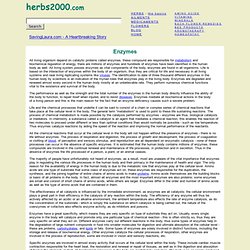
All living system posses enzymes as vital components of the body, enzymes are found in all organisms. Life is based on the interaction of enzymes within the body of an organism, thus they are critical for life and necessary in all living systems and near living replicating systems like viruses. Enzymes. Enzymes / Digestive Enzymes / Enzyme Supplements. List of Digestive Enzymes. ALTERNATIVE Health & Herbs REMEDIES. Enzymes: Life’s Activators By Truman Berst, Master Herbalist All living things need enzymes in order to maintain life. Food enzymes are not something new, but have been known to exist since the time of Hippocrates. It has long been recognized that illness is related to improper diet and inadequate nutrition and that fasting, juicing, and diets rich in herbs and raw foods help restore the body to health.
Traditional foods and ethnic diets with herbs were the rule prior to the introduction of modern processed foods. Enzymes are complex protein molecules which are found in every cell in your body. The digestive system transforms food into energy for the body’s use by breaking down complex proteins, fats and carbohydrates into smaller, simpler, and more usable forms. Enzymes have a great effect upon the entire immune function.